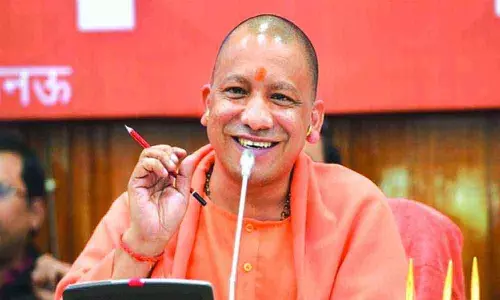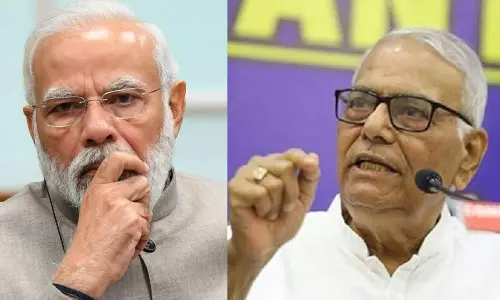
No more bloodshed; not any more
text_fieldsRepresentative image
Blood has again being shed on verdant forests of Chhattisgarh. On April 3rd, 22 CRPF soldiers were martyred in a Maoist attack. After seemingly having retreated amidst the COVID crisis, on March 23, they made their presence felt again after attacking a bus and killing five officers. In the eleven years since 2010, 175 security officers stationed in the Dantewada-Sukhma-Bijapur area designated for Maoist hunt have been killed in action.
Even as radical left organisations are being suppressed or are losing strength in several of its strongholds nationwide, in Chhattisgarh it has only gained strength. People's War groups who retreated in Telangana, Odisha, and Bengal entered the forest areas of Chhattisgarh and received the Adivasi community's large-scale support. This is not due to the loyalty towards the Chinese Communist Party's ideologue Mao or faith in his ideology, but Naxal organisations have been able to turn the community's anger against the occupation of their homelands, displacement and hardships in their lives, caused by the state and corporates, into an armed struggle.
If their rights weren't trampled on and basic infrastructure to make life easier like roads, schools, and hospitals established, the brave but peace-loving Adivasis would throw away their guns and red flags and return to everyday life. Instead, what the state did in Chhattisgarh is arm Adivasis to fight against each other using inhumane tactics like forming the 'Salwa Judum' under the guise of 'anti-Maoist operations'. Schools became military barracks. With the facade of anti-terrorism, they burned down houses, attacked women and children, and killed anyone they suspected, effectively forcing the Adivasis, who weren't Maoist sympathisers, to go over to the Maoists' side. This destroyed the remaining shred of faith the Adivasis had in the system, together with the lives of hundreds of jawans.
The BJP government, who previously held power, had their eye on swindling the crores in funds that flowed in the name of anti-Maoist operations. All their theatrics to gain a heroic image, including hiding the atrocities committed by them, the fake encounters, and the staged surrenders after dressing up innocents as militants worked against them and fueled the militant side. Officials at the Union Home Ministry had earlier warned that the extremists could take advantage of the financial imbalances in the society caused by the financial and rehabilitation packages given to so-called surrenderers. The central government, too, must be held accountable for the death of the jawans. While imprisoning all dissenters, they have forgotten or turned a blind eye towards actual armed militancy on the rise.
The state government can counter the insurgents who fight from deep in the jungles of Chhattisgarh. They wouldn't need modern weaponry but only to ensure that the fruits of development reach everyone in the Adivasi community and assure them that the land they grew up in and their forests and resources will not be taken away from them.
























